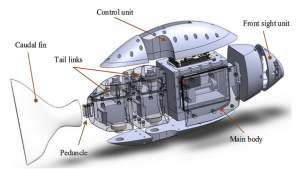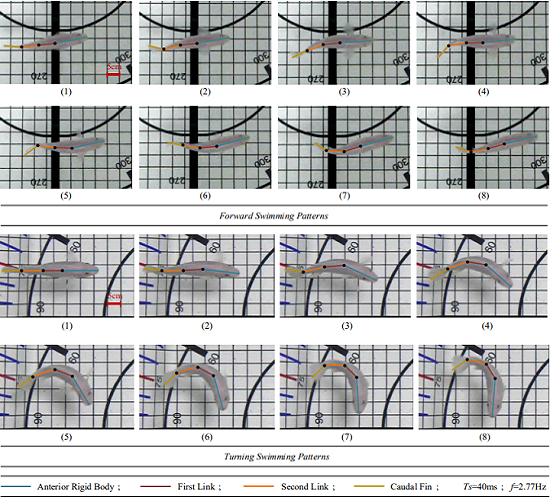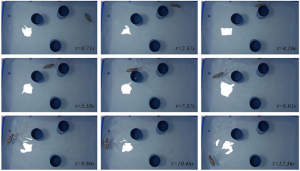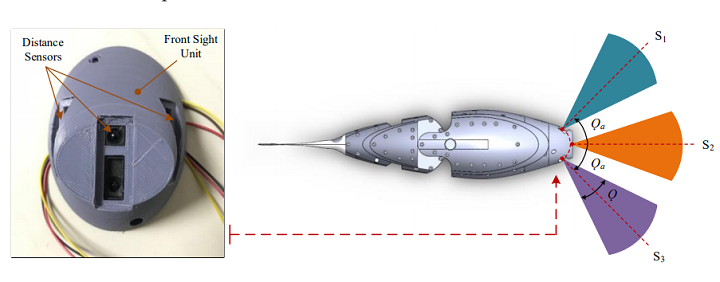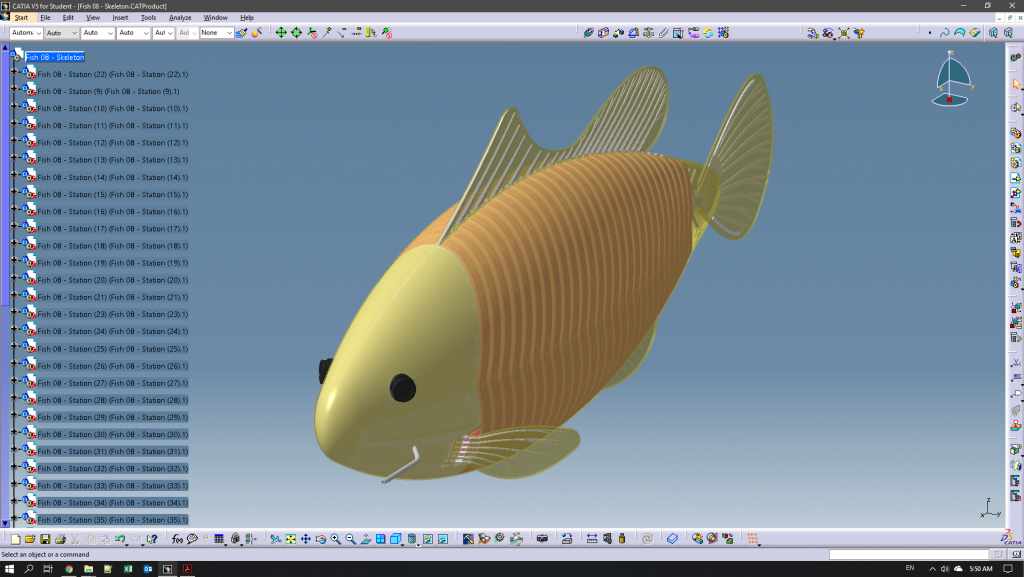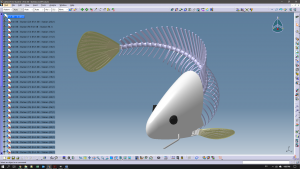3D printed robotic fish have all sorts of applications, from underwater data acquisition and detecting toxins in the water to studying and saving real fish, or just adding a new pet to the family. A group of engineering researchers from the University of Firat in Turkey are using biomimetic design to come up with flexible solutions for different marine applications, like observing organisms, examining underwater resources, finding and combating pollution, coastline security, surveying submerged areas, and fault detection in pipelines.
The researchers, inspired by the carp fish for their 3D printed robotic fish, recently published a paper, titled “Mechatronic Design and Manufacturing of the Intelligent Robotic Fish for Bio-Inspired Swimming Modes,” about their use of 3D printing, robotics, and biomimicry to develop an Autonomous Underwater Vehicle (AUV).
The abstract reads, “This paper presents mechatronic design and manufacturing of a biomimetic Carangiform-type autonomous robotic fish prototype (i-RoF) with two-link propulsive tail mechanism. For the design procedure, a multi-link biomimetic approach, which uses the physical characteristics of a real carp fish as its size and structure, is adapted. Appropriate body rate is determined according to swimming modes and tail oscillations of the carp. The prototype is composed of three main parts: an anterior rigid body, two-link propulsive tail mechanism, and flexible caudal fin. Prototype parts are produced with 3D-printing technology. In order to mimic fish-like robust swimming gaits, a biomimetic locomotion control structure based on Central Pattern Generator (CPG) is proposed. The designed unidirectional chained CPG network is inspired by the neural spinal cord of Lamprey, and it generates stable rhythmic oscillatory patterns. Also, a Center of Gravity (CoG) control mechanism is designed and located in the anterior rigid body to ensure three-dimensional swimming ability. With the help of this design, the characteristics of the robotic fish are performed with forward, turning, up-down and autonomous swimming motions in the experimental pool. Maximum forward speed of the robotic fish can reach 0.8516 BLs-1 and excellent three-dimensional swimming performance is obtained.”
Two of the most important things to consider when designing a 3D printable, biomimetic robotic fish are its body structure and swimming modes, so the researchers spent a lot of time observing and examining fish to get the design right. According to the paper, over 85% of fish swim by bending their bodies and/or caudal fins, also known as BCF, while the rest swim with their median and/or pectoral fins (MPF).
“There are two basic approaches in robotic fish design. First is the biomimetic design which has certain requirements such as a tail with the size and number of joints to provide body travelling wave, and the ability to stay at a certain depth with the control of the center of gravity,” the researchers wrote. “The second design approach uses only the movement effects of fish, but it is not physically inspired by real fish.”
Bio-inspired robotic fish use oscillatory and/or undulatory body motions. The University of Firat team’s robotic fish prototype replicates BCF-type Carangiform swimming modes with its propulsive, servo motor-driven tail mechanism; it also features anterior, rigid, torpedo-shaped body to hold all of the sensors and electronics, along with the Center of Gravity (CoG) control mechanism for moving up and down.
The 3D models of the robotic fish were first designed in SOLIDWORKS and then transferred to Voxelizer, before being 3D printed with PLA material, though the flexible caudal fin was made with a silicone mold. Epoxy resin was used to cover each part in order to prevent possible micro pore leakage, and after the robotic fish was assembled, its surface was covered with synthetic paint to prevent leaks caused by capillary cracks.
Because robotic fish need to be able to perceive static and dynamic objects in their environment while they swim around, the team added three Sharp infrared distance sensors to their fish, which weights roughly 3.1 kg and is about 500 mm long, 76 mm wide, and 215 mm high. A two-link tail mechanism provides the necessary thrust for the fish to move.
“This study presents the biomimetic design and manufacturing of the intelligent robotic fish prototype (i-RoF) based on bio-inspired swimming to perform real-world exploration and survey missions,” the researchers concluded. “The robotic fish prototype for three-dimensional motion abilities is investigated in the real experimental system. In these analyses, more than 72 different experimental studies were performed to obtain the characteristics of the prototype.
“In order to test the sealing performance of the mounted parts, they run during 6 hours in a water-filled test pool. The success of sealing tests is observed.”
Future research could center around examining the 3D printed robotic fish prototype’s closed-loop control performances using different control structures, as well as testing its swimming ability in different watercourses.
Co-authors of the paper include Mustafa Ay, Deniz Korkmaz, Gonca Ozmen Koca, Cafer Bal, Zuhtu Hakan Akpolat, and Mustafa Can Bingol.
Discuss this story and other 3D printing topics at 3DPrintBoard.com or share your thoughts in the comments below.


